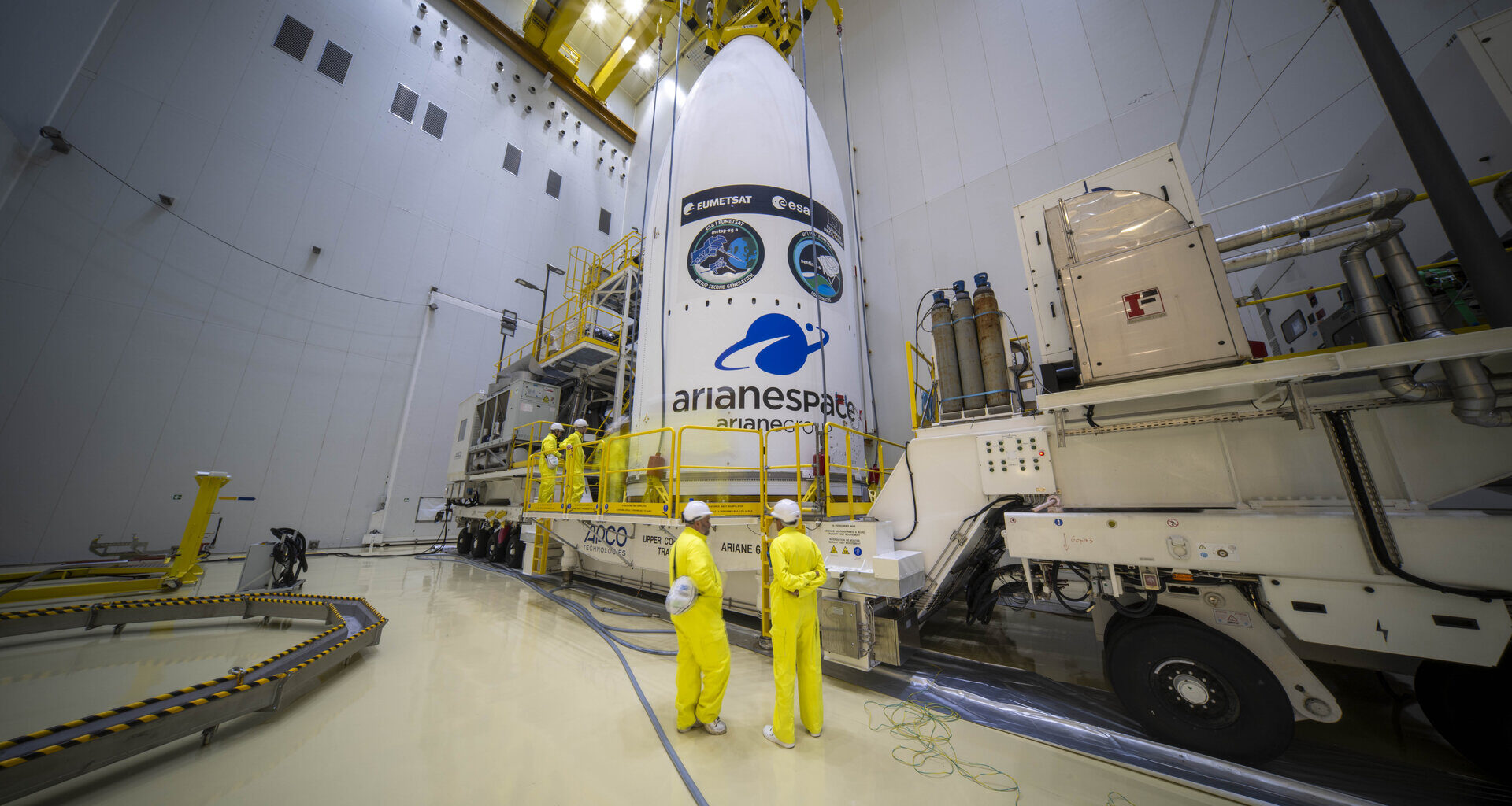Enabling & Support
10/10/2025
3 views
0 likes
As one of ESA’s founding members, Switzerland has been an important player in the space sector for decades. Swiss technology is ubiquitous both on and beyond Earth – during the Moon landing, the Apollo 11 crew wore Swiss watches, and their suits were secured by Velcro, or ‘hook-and-loop fastener’, invented by a Swiss engineer. Today, Swiss companies and universities are involved in the majority of ESA’s space science missions, including the Solar Orbiter, Gaia, Juice or Rosalind Franklin.
Switzerland contributes 2.4% to the Ariane 6 programme and so two Switzerland-based companies, Beyond Gravity and APCO Technologies supply components for the Ariane 6 rocket, as well as ground support equipment essential for its development.
This series of articles is looking at the parts and components needed to assemble the Ariane 6 rocket – supplied by companies from the 13 ESA Member States participating to the Ariane 6 programme. Together they contribute the best of their know-how to build Europe’s heavy-lift launcher under the guidance of main contractor ArianeGroup who also designed the Ariane 6 rocket.
Beyond Gravity – protecting valuable cargo
MetOp-SG-A1 sealed within Ariane 6 fairing
Beyond Gravity Switzerland, formerly known as RUAG Space, has supplied the payload fairings for all Ariane missions since the rocket’s inaugural flight in 1979, and will continue to do so for the Ariane 6 launchers.
The payloads – most often satellites – carried to space on Ariane 6 are nestled underneath the fairing – a nose cone that splits vertically in two – at the very top of the rocket. Destined for the outer space, these valuable passengers require reliable protection from the extreme thermal, acoustic and aerodynamic conditions the rocket is subjected to during its launch and voyage through Earth’s atmosphere.
Safeguarding the cargo is the task of the fairings – two half-shells making up the rocket’s cone-shaped top. Once beyond the atmosphere – having served its purpose – the two shells separate, exposing the payload underneath.
Manufactured by Beyond Gravity at its Emmen site in Switzerland, these indispensable launcher parts come in two variants, 20 or 14 metres tall, to accommodate passengers of various sizes. The larger fairing type weighs in at 2.6 tonnes, the smaller 1.8 tonnes, and both match the rocket’s diameter of 5.4 metres. Each shell of the fairing is manufactured in one piece from carbon fibre material and cured in an industrial oven to solidify into its final shape and form.
APCO Technologies – booster attachments and ground support
Transferring Ariane 6 booster for flight VA263
The Ariane 6 rocket comes in two models, with either two or four booster engines. Each one of the boosters, referred to technically as Equipped Solid Rocket (ESR), generates thrust that is equal to more than 35 jet engines, providing the mighty push necessary for liftoff. Switzerland-based APCO Technologies provide the booster nose cap as well as the booster attachments, securing the engines to the rocket’s core stage. In rocket-building every detail must be considered, so the booster attachments have to withstand the immense upward thrust that is transferred to the core stage.
Ariane 6 central core reaches the assembly building at Europe’s Spaceport
In addition to the booster parts, APCO also supplies the Mechanical Ground Support Equipment (MGSE). As the name implies, these machines are not designed to travel skywards, but mostly horizontally over land and sea around assembly halls and test centres and are instrumental throughout the rocket’s development all the way to launch. MGSE includes assembly and integration equipment for the upper stage assembled in Bremen, Germany, and the main stage in Les Mureaux, France, as well as the climate-controlled containers that are used to safely store and transport the rocket from Europe to French Guiana.
MetOp-SG-A1 and Sentinel-5 on a roll to the launch pad
At Europe’s Spaceport, APCO supplies the Encapsulation Dock that allows for the assembly and transport of the fairing around the Ariane 6 payloads, as well as the Upper Composite Trailer that takes the payload in its fairing to the launch pad. At 6 m wide and 26 m long this trailer is as large as a tennis court and has two driver cabins – instead of “reversing” the driver can jump out and walk to the other side to drive in the opposite direction. At 180 tonnes it has 32 wheels and three generators for power.
Moving Ariane 6 central core for inaugural flight
Last but not least APCO also builds the transporter ‘robots’ that take the Ariane 6 central core – the main and upper stage assembled – from the launcher assembly building to the launch pad that is about 800 meters away. These automated vehicles follow a magnetic strip under the road keeping the rocket perfectly aligned on its last voyage before liftoff. Once at the launch pad, choreographed movements by two of the automated vehicles at the rear end of the rocket work together with a lifting beam, to raise the central core to its vertical launch position.
Through the work of Beyond Gravity, APCO Technologies, and many more companies across 13 countries, the Ariane 6 programme ensures the continuation of Europe’s autonomous access to space.
Moving the Ariane 6 upper part to the launch pad for first flight
Like
